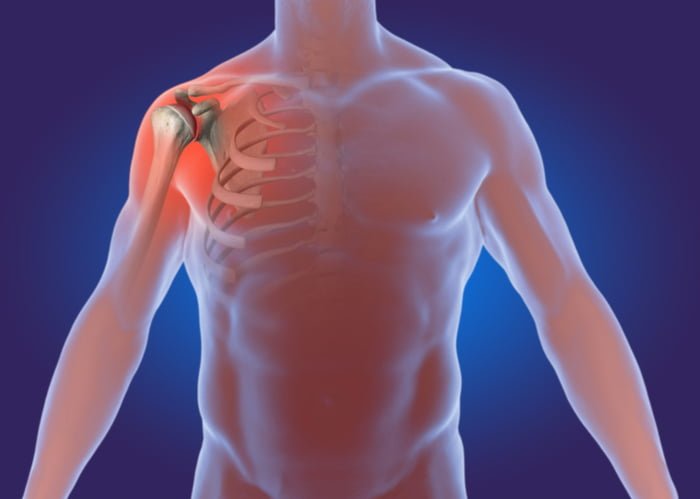Shoulder pain is a prevalent complaint that can range from a minor annoyance to a debilitating condition affecting daily life. It can stem from various causes, such as injuries, overuse, poor posture, or underlying medical conditions. Regardless of the origin, finding relief from shoulder pain is crucial for maintaining a healthy and active lifestyle. In this blog, we’ll explore a variety of remedies that can help alleviate shoulder pain and promote overall shoulder health.
Contents
Understanding Shoulder Pain: Anatomy and Types

Shoulder pain is a common complaint that can significantly impact daily activities and quality of life. To effectively address and manage shoulder pain, it’s important to understand the anatomy of the shoulder joint and the various types of shoulder pain that can occur.
Anatomy of the Shoulder
The shoulder joint is a complex and highly mobile joint that allows for a wide range of motion. It consists of several components that work together to facilitate movement and stability:
- Bones: The main bones of the shoulder include the humerus (upper arm bone), scapula (shoulder blade), and clavicle (collarbone). The rounded head of the humerus fits into a shallow socket in the scapula called the glenoid.
- Joints: The main joints of the shoulder are the glenohumeral joint and the acromioclavicular joint. The glenohumeral joint is a ball-and-socket joint formed by the head of the humerus and the glenoid cavity of the scapula. The acromioclavicular joint is where the acromion (a bony projection of the scapula) meets the clavicle.
Types of Shoulder Pain
Shoulder pain can manifest in various ways, and understanding the different types of shoulder pain can aid in diagnosis and treatment. Some common types of shoulder pain include:
- Rotator Cuff Injuries: Rotator cuff injuries, such as tears or strains, can cause pain and limited range of motion. These injuries can result from overuse, trauma, or degenerative changes.
- Frozen Shoulder (Adhesive Capsulitis): This condition involves stiffness and pain in the shoulder joint, often accompanied by restricted movement. It typically develops gradually and can be linked to inflammation and tightening of the joint capsule.
- Bursitis: Inflammation of the bursa, often caused by repetitive motions or trauma, can lead to pain and tenderness in the shoulder. Subacromial bursitis is a common type that affects the subacromial bursa.
- Tendinitis: Tendinitis is inflammation of a tendon, commonly affecting the rotator cuff tendons. Overuse, poor posture, and age-related changes can contribute to this condition.
Diagnosing the Pain: Seeking Medical Help
Knowing when to seek medical attention for shoulder pain is important. sO
- Primary Care Physician: Your first step should be to schedule an appointment with your primary care physician. They can conduct a thorough physical examination, discuss your symptoms, and recommend initial treatments or further tests if necessary.
- Orthopedic Specialist: If your primary care physician suspects a musculoskeletal issue, they might refer you to an orthopedic specialist. These specialists have expertise in diagnosing and treating conditions related to the bones, joints, and muscles.
- Physical Therapist: Physical therapists can help assess your shoulder’s range of motion, strength, and flexibility. They can design a personalized exercise program to improve your shoulder’s function and relieve pain.
- Imaging Tests: In some cases, your doctor might recommend imaging tests such as X-rays, MRI (magnetic resonance imaging), or ultrasound to get a better view of the internal structures of your shoulder and identify any abnormalities.
Remedies at Home: Taking Initial Steps

Shoulder pain can disrupt your daily activities and affect your quality of life. While it’s important to seek medical advice for persistent or severe pain, there are several effective home remedies and initial steps you can take to alleviate mild to moderate shoulder discomfort. In this article, we’ll explore practical remedies you can try at home to find relief from shoulder pain.
Rest and Ice
- Rest: Give your shoulder joint a break from activities that may aggravate the pain. Avoid overusing the shoulder and refrain from lifting heavy objects or performing repetitive motions.
- Ice Pack: Applying an ice pack to the affected area can help reduce inflammation and numb the pain. Wrap the ice pack in a cloth and apply it to the shoulder for about 15-20 minutes at a time. Repeat this several times a day as needed.
Over-the-Counter Pain Relievers
- Nonsteroidal Anti-Inflammatory Drugs (NSAIDs): Medications like ibuprofen or naproxen can help relieve pain and reduce inflammation. Always follow the recommended dosage and guidelines on the label.
Gentle Stretches and Exercises
- Pendulum Exercise: Stand and lean over slightly, allowing the affected arm to hang down. Gently swing the arm back and forth and in circles to help improve circulation and flexibility.
- Wall Crawls: Stand facing a wall and gently walk your fingers up the wall as far as you comfortably can. Then, walk your fingers back down. This exercise helps improve the range of motion.
Heat Therapy
- Warm Compress: Applying a warm compress or taking a warm shower can help relax tense muscles and improve blood circulation, providing relief from stiffness and discomfort.
Posture Awareness
- Maintain Good Posture: Poor posture can contribute to shoulder pain. Be mindful of your posture while sitting, standing, and working to avoid straining the muscles around your shoulder.
Lifestyle Adjustments
- Ergonomic Workspace: If your shoulder pain is aggravated by desk work, make sure your workspace is ergonomically designed. Adjust your chair, and desk height, and monitor position to maintain a neutral posture.
Sleep Position
- Supportive Sleep Position: If your shoulder pain is worse at night, try sleeping on the side opposite to the affected shoulder or use pillows to support your arm and maintain a comfortable position.
Topical Treatments
- Pain-Relieving Creams or Gels: Over-the-counter topical creams or gels containing ingredients like menthol or capsaicin can provide localized pain relief when applied to the affected area.
Mind-Body Techniques
- Relaxation Techniques: Practices like deep breathing, meditation, and progressive muscle relaxation can help reduce muscle tension and promote relaxation, indirectly relieving shoulder pain.
Supportive Gear
- Shoulder Brace or Sling: If your pain is due to strain or minor injury, using a supportive shoulder brace or sling can help immobilize the joint and provide relief.
Hydration and Nutrition
- Stay Hydrated: Proper hydration supports overall joint health. Drink plenty of water throughout the day.
- Anti-Inflammatory Diet: Incorporate foods rich in antioxidants and anti-inflammatory properties, such as fruits, vegetables, whole grains, and omega-3 fatty acids, to potentially reduce inflammation and alleviate pain.
Medical Measures: Sustaining Shoulder Well-being

Medications can play a role in managing shoulder pain and inflammation, but they should be used under the guidance of a healthcare professional. Here are some types of medications that might be considered for sustaining shoulder well-being:
- Nonsteroidal Anti-Inflammatory Drugs (NSAIDs): NSAIDs like ibuprofen, naproxen, and aspirin can help reduce pain and inflammation in the shoulder joint. They can be helpful for conditions like shoulder tendonitis or bursitis. However, prolonged or excessive use of NSAIDs can have side effects, so it’s important to use them as directed by a doctor.
- Topical Analgesics: These are creams, gels, or patches that can be applied directly to the skin over the painful area. They can provide localized pain relief without some of the potential systemic side effects associated with oral medications.
- Muscle Relaxants: If shoulder pain is related to muscle tension or spasms, muscle relaxants might be prescribed to help alleviate discomfort and improve range of motion.
- Corticosteroid Injections: In cases of severe inflammation or conditions like a frozen shoulder, corticosteroid injections can be administered directly into the shoulder joint. These injections can provide significant relief, but they are usually limited to a few times a year due to potential side effects.
- Pain Relievers: Acetaminophen (Tylenol) is an over-the-counter pain reliever that can help manage mild to moderate shoulder pain. It’s important to follow dosing guidelines and avoid exceeding the recommended dose to prevent liver damage.
- Prescription Pain Medications: For more severe pain that doesn’t respond to other treatments, stronger prescription pain medications might be considered. These should be used cautiously due to the risk of dependence and side effects.
Conclusion
Shoulder pain is a common issue that can significantly impact your daily life. Whether through home remedies, professional care, or lifestyle adjustments, managing and preventing shoulder pain is within your control. Prioritizing shoulder health ensures your ability to engage in activities you love without discomfort.
If you’re experiencing Shoulder pain, physical therapy for shoulder pain at PhysioMantra can help: Book an online physical therapy session.



